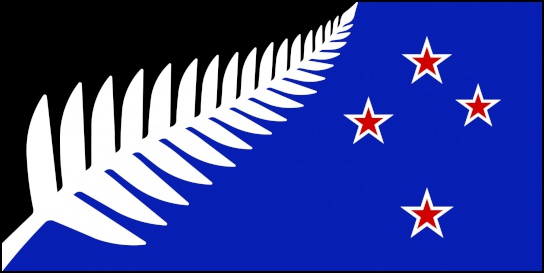The fern ‘confirmed Pakeha as genuine New Zealanders’
The fern ‘confirmed Pakeha as genuine New Zealanders’
The silver fern was once proudly embraced by Pakeha as a symbol of their new-found home in New Zealand.
Now, it seems likely to be rejected on a new flag in preference to a mix of meaningless triangles, with no historical origins that can possibly compare to the fern.
The fern once anchored new kiwis to this landscape. It’s a shame that we have such short memories.
The major complaint against the use of the fern has been its popular use as a brand, or a logo. Some have said it belongs on sporting jerseys and vests, but not on the flag.
For those of us who care about our country’s history, this level of criticism has been a little disheartening, to say the least. The silver fern does have deep historical roots. Perhaps our modern addiction to mass consumerism, and commercial symbolism, blinds us from seeing the silver fern in its real historical context.
The fern’s appearance as a national symbol goes back to the 1880s, when Pakeha decided that they wanted to be New Zealanders, after all. Census figures in 1886 showed that native-born Pakeha now exceeded 'Europeans' living here but born overseas.
This new feeling of ‘belonging’ gave rise to the Native Associations, which formed after a successful inaugural meeting of settlers in Westport in 1890 (inspired by similar movements in Australia and Canada). Branches soon sprang up all over New Zealand, giving rise to an outpouring of nationalist literature, poetry, songs and landscape paintings as Pakeha searched amongst the figurative undergrowth for an organic foothold.
 'Silver Fern
(Black,White & Blue)', Designed by Kyle Lockwood
'Silver Fern
(Black,White & Blue)', Designed by Kyle Lockwood
By 1898, there were 2500 members, with branches all over New Zealand, in centres like Dunedin, Wellington, Auckland, Westport, Thames, New Plymouth and Hawera.
Politicians and professionals, as well as ordinary folk, flocked to join, eager to solidify their sense of being a ‘New Zealander’ (a term once directed only at Maori).
Most tellingly, though, the Associations adopted the silver fern as their emblem, taking pride in its natural simplicity. Its acceptance amongst Pakeha grew rapidly. Everyone was soon wearing the silver fern badge. A fern emblem was also worn by our troops in South Africa after 1899; our first Boer War commander, Major Robin, was farewelled in Dunedin by a huge Natives Association gathering. And in Europe, after 1914, the fern was used to adorn kiwi headstones on the Western Front.
Pakeha New Zealanders had found a symbol of home they could live with - the silver fern.
Earlier, however, Tom Ellison of Ngai Tahu had introduced the silver fern to our national rugby team. In 1888 he suggested that the New Zealand Natives team adopt the fern, which they did and now wear of course as All Blacks, as do countless other sporting, civic, community and commercial associations.
As Sir Tipene O’Regan once reminded me, to Maori, the silver fern denotes strength, stubborn resistance, and enduring power, encapsulated in a natural form of native elegance. Maori have always honoured the fern, giving it a pride of place.
Early Pakeha did this, also.
Overseas, the fern has become the unmistakable symbol of New Zealand, earning instant recognition. Thanks to the early efforts of Pakeha, it's become our national symbol. It’s more than just a mere commercial brand, which is what many commentators and academics with no sense of history would have us believe.
The silver fern was once embraced by Pakeha and survives as a symbol of organic beauty. It takes us beyond our British colonial origins, when, under the current flag, our boys went overseas and died to defend Empire, to say nothing of those 3000 Maori who died on our own soil, defending hearth and home, under attack by the same flag.
The fern represents all of us; we should be proud to see it on our flag.
Dr Danny Keenan lives in Whanganui and has a PhD in Maori history. He has taught at Massey University and Georgetown University, Washington DC. His website is www.newzealandwars.co.nz #


 Eugene Doyle: Joining AUKUS Not In NZ’s National Interest
Eugene Doyle: Joining AUKUS Not In NZ’s National Interest Binoy Kampmark: The Australian Defence Formula, Spend! Spend! Spend!
Binoy Kampmark: The Australian Defence Formula, Spend! Spend! Spend! Ian Powell: New Hospital Building Trumps ‘Yes Minister’ Hospital Without Patients
Ian Powell: New Hospital Building Trumps ‘Yes Minister’ Hospital Without Patients Mike Treen: Prices Are Still Rising - It's A Cost Of Living Crisis
Mike Treen: Prices Are Still Rising - It's A Cost Of Living Crisis Gordon Campbell: On When Racism Comes Disguised As Anti-racism
Gordon Campbell: On When Racism Comes Disguised As Anti-racism Peter Dunne: Newshub And TVNZ Tip Of Media Iceberg
Peter Dunne: Newshub And TVNZ Tip Of Media Iceberg